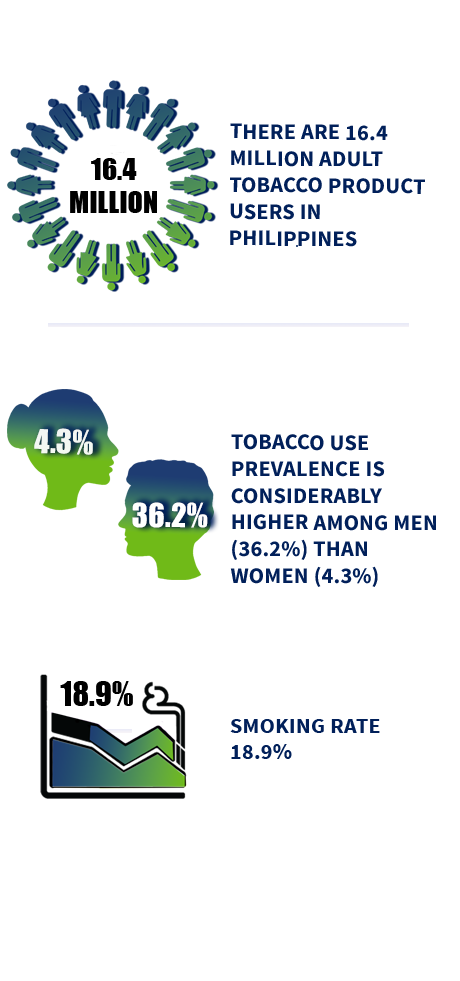This page was last edited on: March 26, 2024 at 3:28 pm
18.9% (2022)
20.4% (2022)

As research findings become available that are inclusive of additional gender identities, the Foundation will update the information presented.
[1] Source: World Health Organization: Non-age-standardized estimates of current tobacco use, tobacco smoking and cigarette smoking (Tobacco control: Monitor) and The World Bank’s Population Estimates and Projections.
Explanation: This estimate is calculated by applying the WHO’s estimated percentage of tobacco smokers for 2023 to the World Bank’s projected population figures for the same year for 15 years and older. These figures should be used with caution, as they do not account for the 95% credible interval around the estimate.
© 2023 Foundation for a Smoke-Free World. All rights reserved.